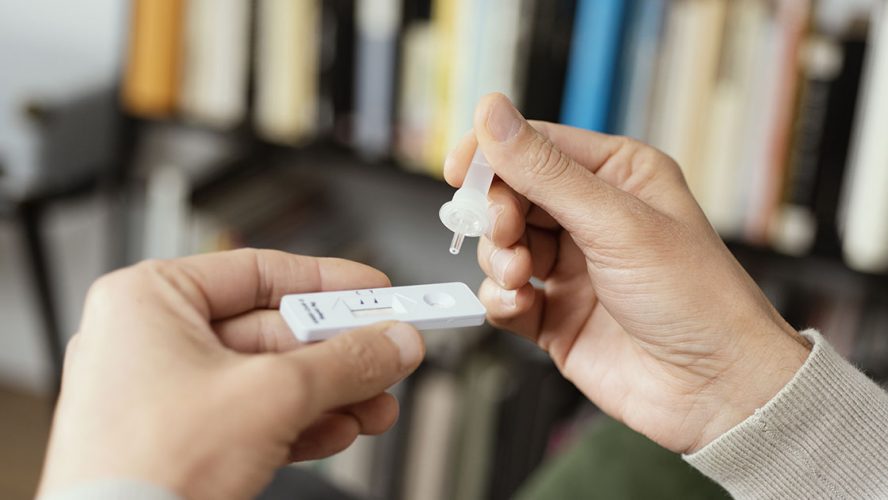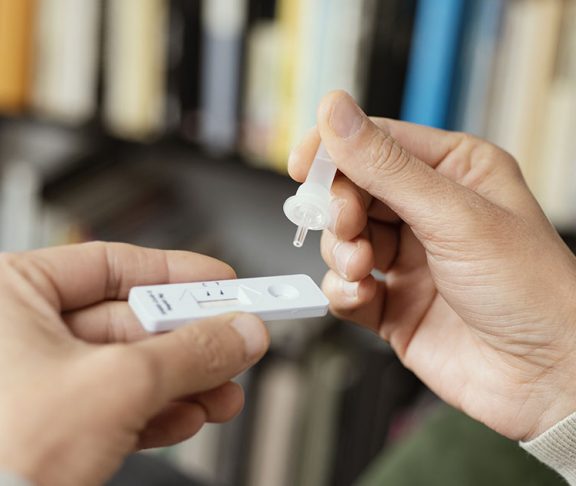
Geetika Nadkarni
Director, Chronic Infectious Disease, The Association of State and Territorial Health Officials (ASTHO)
By now, we are used to monitoring our health at home. Fitness trackers, glucose monitors, and at-home pregnancy tests are just a few examples of ways people keep track of their health daily from the comfort of their own home. This ease of access has now extended to testing during the COVID-19 pandemic.
Self-testing, or using self-collected samples for testing, is a relatively new healthcare procedure that is gaining more popularity. Although these rapid tests are sometimes less accurate than those conducted in a traditional healthcare setting, they are still a useful diagnostic tool, and should be a more normalized option for individuals who want to know their current health status.
One of the early surprises of the pandemic was how rapidly COVID-19 spread among asymptomatic individuals. With self-testing, people can check their status regardless of the presence of symptoms. This can also be useful for seasonal influenza, where symptoms such as fatigue may not be recognized as out of the ordinary.
A community of 6,340,388 people (and counting) tracking local COVID-19 and flu outbreaks.
The benefits of self-testing
There are currently self-tests available for HIV and other sexually transmitted infections (STIs), such as chlamydia, gonorrhea, and hepatitis. Some provide results in minutes, and other tests require that a self-collected sample be shipped to a lab for results in several days.
For STIs, individuals may not feel comfortable going in-person to see their provider for an STI test. With the privacy of an at-home test, more people may be willing to get tested and may do so sooner, which can reduce the health consequences of an infection, as well as potentially reduce the number of people the infected person could come in contact with following a diagnosis.
Challenges ahead
However, connecting at-home testing with public health has been one of the challenges of the COVID-19 pandemic. Ideally, individuals should report their test results to their provider or the health department. They may also need to isolate and inform their contacts of their COVID-19 status. Testing also becomes an opportunity to offer other health services, such as vaccinations to the individual and any of their contacts if needed.
Self-testing is just the first step of self-care. Just as an individual testing positive on a pregnancy test or displaying high glucose levels would need to connect with their healthcare provider for care, self-testing for infections also requires follow-up.
For example, residents in Washington, D.C. who use at-home tests with the GetCheckedDC program receive their results along with an invitation from the clinic to follow up for treatment or prevention as needed. Following up with the clinic ensures that the patient gets the care they need. This linkage is also important so that public health departments can track infections and potential outbreaks. Health departments should be automatically notified of any positive results so they can take appropriate action, such as contact tracing via disease intervention specialists.
Despite these challenges, self-tests are incredibly convenient because they can be used anywhere. They are especially useful in rural settings, where individuals may have long drives to the nearest clinic. Increased access saves time and money, especially if an in-person visit is not needed.
Individuals can be empowered and proactive about their own health status as self-testing becomes more affordable and available. This will also allow individuals to connect with healthcare and public health contacts in real time with follow-up care as required. The potential of self-testing lies far beyond COVID-19 or STIs, as it can be useful for seasonal influenza or other common infections. Accurate, convenient self-testing connected to existing care systems can help ensure that the next outbreak does not become the next pandemic.


